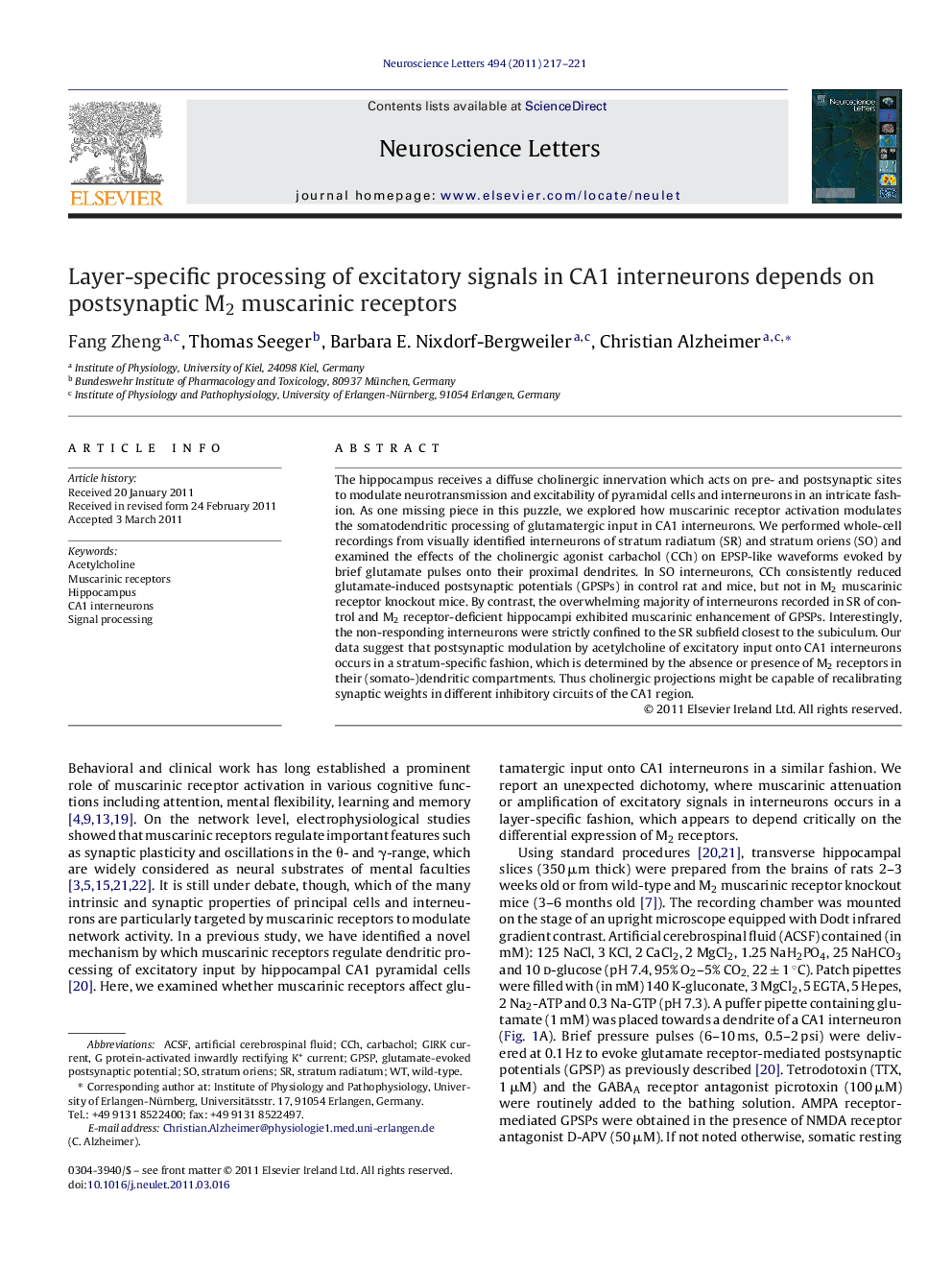| کد مقاله | کد نشریه | سال انتشار | مقاله انگلیسی | نسخه تمام متن |
|---|---|---|---|---|
| 4345363 | 1296725 | 2011 | 5 صفحه PDF | دانلود رایگان |

The hippocampus receives a diffuse cholinergic innervation which acts on pre- and postsynaptic sites to modulate neurotransmission and excitability of pyramidal cells and interneurons in an intricate fashion. As one missing piece in this puzzle, we explored how muscarinic receptor activation modulates the somatodendritic processing of glutamatergic input in CA1 interneurons. We performed whole-cell recordings from visually identified interneurons of stratum radiatum (SR) and stratum oriens (SO) and examined the effects of the cholinergic agonist carbachol (CCh) on EPSP-like waveforms evoked by brief glutamate pulses onto their proximal dendrites. In SO interneurons, CCh consistently reduced glutamate-induced postsynaptic potentials (GPSPs) in control rat and mice, but not in M2 muscarinic receptor knockout mice. By contrast, the overwhelming majority of interneurons recorded in SR of control and M2 receptor-deficient hippocampi exhibited muscarinic enhancement of GPSPs. Interestingly, the non-responding interneurons were strictly confined to the SR subfield closest to the subiculum. Our data suggest that postsynaptic modulation by acetylcholine of excitatory input onto CA1 interneurons occurs in a stratum-specific fashion, which is determined by the absence or presence of M2 receptors in their (somato-)dendritic compartments. Thus cholinergic projections might be capable of recalibrating synaptic weights in different inhibitory circuits of the CA1 region.
► Processing of excitatory input in hippocampal CA1 interneurons is layer-specific.
► Postsynaptic muscarinic M2 receptors reduce strength of excitatory signals.
► Differential expression of M2 receptors tunes synaptic gain.
Journal: Neuroscience Letters - Volume 494, Issue 3, 2 May 2011, Pages 217–221